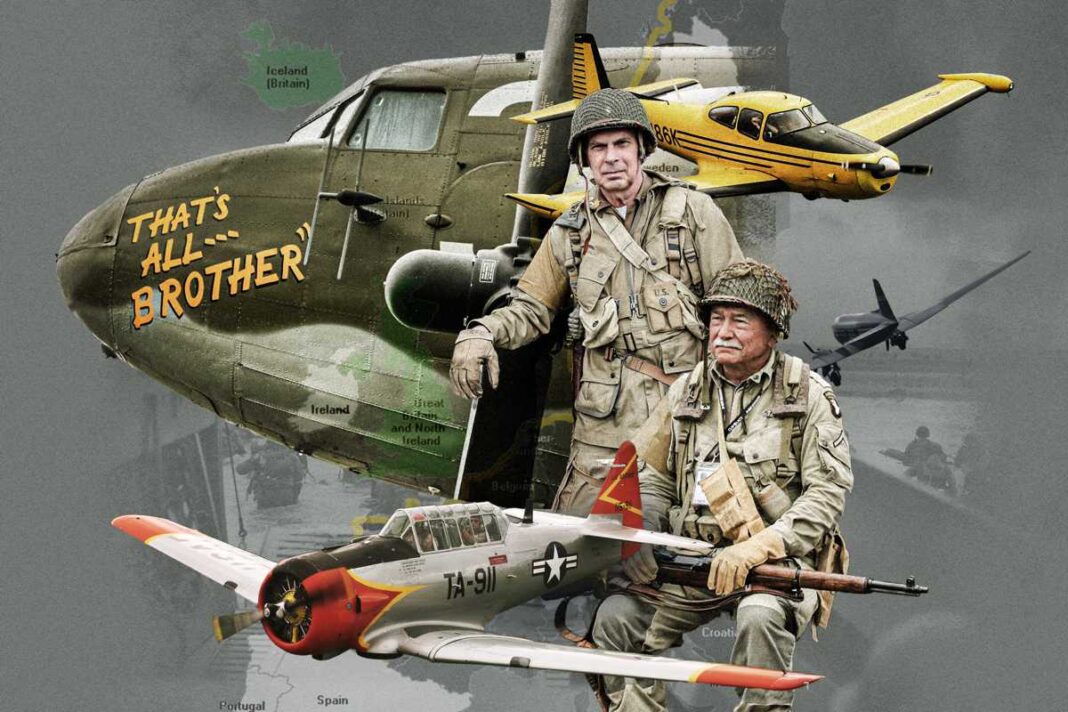Max Gurney, 102, of San Diego is a proud member of the small contingent of surviving veterans who will witness the historic event.
OXFORD, Conn.—High above the muddy Hudson River, the D-Day Squadron had flown nearly 100 miles in tight formation to reach the towering spires of New York City.
Straight ahead, the mirror-blue One World Trade Center—Manhattan’s tallest building at 1,776 feet—rose majestically above a drab sea of skyscrapers.
Just beyond was the Statue of Liberty with its torch of freedom reaching toward the clouds.
The five WWII-era aircraft banked left to get a better look at Lady Liberty perched on its island pedestal in the New York Harbor just before the return flight to Connecticut.
Eighty years ago, the view from the squadron’s C-47 troop transport aircraft named “That’s All, Brother” looked much different as it flew into a world war raging 3,528 miles across the Atlantic Ocean.
The massive airborne operation took place in the pre-dawn hours of June 6, 1944–D-Day. That’s All, Brother was the first of hundreds of paratroop transport planes to deliver their human cargo over the heavily fortified beaches of Normandy, France.
At least 10,000 Allied soldiers (nearly 4,500 Americans) perished during the land, air, and sea invasion on D-Day and at least a quarter of these casualties were airborne troops. Germany’s losses were no less severe, with around 200,000 either killed or wounded.
The military operation marked the beginning of the end of the war in Europe.
The May 17 flight over New York City was a trial run for the D-Day Squadron’s 2024 Legacy Tour, which will commemorate the 80th Anniversary of the historic invasion and the 75th Anniversary of the Berlin Airlift in Wiesbaden, Germany.
On May 18, the squadron took to the skies once again from Oxford, Connecticut, this time on a trans-Atlantic flight across the “Blue Spruce Route” used during WWII.
According to the D-Day Squadron, the Blue Spruce Route “refers to the ferry and refueling navigational path from North America to Europe that was leveraged during the war.
By Allan Stein








